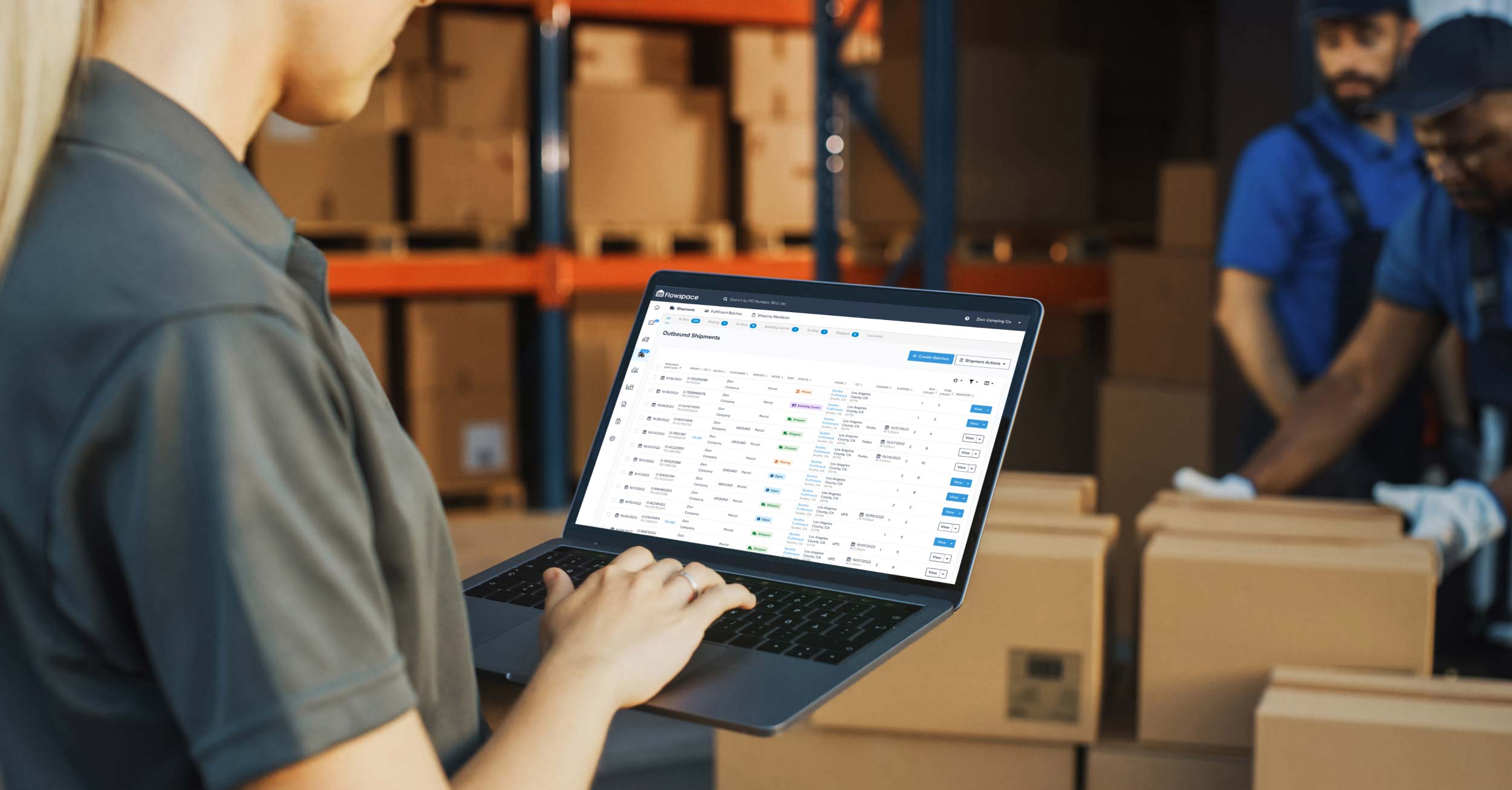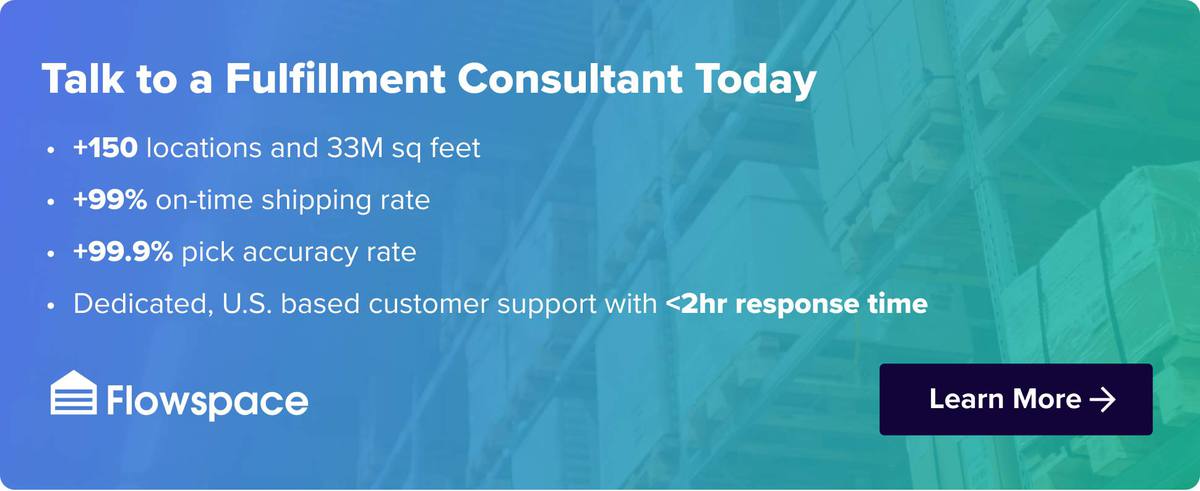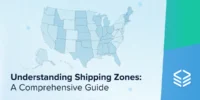
Many ecommerce brands outsource logistics and supply chain management to third-party companies. 3PL and 4PL refer to different types of logistics and supply chain management service providers.
Read more about the major differences, advantages and disadvantages of a 3PL and 4PL.
What is a Third Party Logistics (3PL) Company?
So, what is a 3PL? 3PL providers are external companies that offer logistics services. These services include transportation, warehousing, and distribution. The third-party logistics provider is responsible for managing and executing these services on behalf of brands, which means the brand can focus on other aspects of operating the ecommerce business.
Oftentimes 3PLs focus on just one aspect of the logistics and supply chain services. This can mean that brands wanting to outsource more than one service might end up contracting with several 3PLs to ensure that all of their needs are met.
What is a Fourth Party Logistics (4PL) Company?
4PL providers are higher-level logistics service providers that manage the entire supply chain. These providers act as a single point of contact and coordination between the brand and multiple 3PL service providers that handle different steps of the supply chain process. The fourth-party logistics provider is responsible for managing the entire logistics network, from procurement to delivery, and ensuring that everything runs smoothly. Using a 4PL can free up even more time for the brand to focus on other areas, including growth.
Advantages & Disadvantages of Using Each Model
Advantages and Disadvantages of 3PL
The advantages of a 3PL include cost-effectiveness, scalability and flexibility. 3PL providers can help brands save money by reducing transportation, warehousing, and distribution costs. They can also help brands scale their logistics operations up or down as demand changes without having to invest in additional infrastructure or resources. Brands also get increased flexibility with a 3PL because they can customize the services they use to meet their own unique needs.
The disadvantages of a 3PL include lack of control, communication issues and reduced visibility. Outsourcing logistics to a 3PL can mean a loss of control over the logistics processes and can make it difficult for the brand to respond to changes in demand or supply chain disruptions compared to handling logistics in house since making changes involves talking to another party. It’s also important to note that communication issues between the 3PL and the brand can lead to misunderstandings and delays, which can make it harder to make changes. At the same time, a brand can lose some of its visibility into the logistics operations, which can also make it harder to identify areas to optimize.
Advantages and Disadvantages of 4PL
Advantages of using a 4PL include centralized control, improved visibility and enhanced collaboration. 4PLs provide centralized control and coordination of the entire supply chain, which allows a brand to improve efficiency and reduce costs. Brands also get improved visibility by using a 4PL, which allows a brand to identify inefficiencies and improve performance. 4PLs can facilitate collaboration between everyone involved in the supply chain, including suppliers, manufacturers and distributors. This can lead to improved outcomes for the brand.
A 4PL handles multiple aspects across supply chain services, active on-going management, and technology support, they may not make sense for ecommerce brands that are just starting out and don’t have much volume or complexity to their business.
How Do I Choose Which Model is Best for My Business?
Choosing between a 3PL vs 4PL depends on a brand’s specific logistics and supply chain needs. Evaluating the different services is crucial for ensuring that a brand’s logistics needs are met efficiently and effectively. Here are some ways brands can evaluate the options to decide which one might be right for them.
One thing brands need to evaluate for all providers is the cost-effectiveness. Brands need to evaluate the provider’s pricing structure and compare it to other providers in the market as well as the value of each service provided. Another thing brands need to look at for all potential partners is customer service. Brands should evaluate the provider’s responsiveness, communication, and ability to resolve issues quickly and effectively.
A great way to evaluate a provider’s services and reputation is to talk to their clients. Brands can ask for references or testimonials from their current or previous clients. This can provide valuable insights into the provider’s quality, reliability, and customer satisfaction.
Evaluating 3PL Services
A 3PL should be flexible and reliable, so brands should evaluate how a provider can scale up or down their services as well as a provider’s track record on on-time delivery, order accuracy and damage rates.
If a brand operates in a niche market, it can be helpful to find a 3PL that has experience in that specific market. That 3PL can help the brand navigate market specific logistical challenges.
One of the benefits of outsourcing is that third-party providers have better technology capabilities, such as their transportation management system and warehouse management system. It’s important that the brand evaluate the 3PL’s technology offerings. A 3PL should offer real-time visibility and tracking, as well as reporting and analytics capabilities.
Evaluating 4PL Services
A 4PL should have expertise and knowledge in managing supply chains across multiple industries. Brands should evaluate their experience and knowledge in areas such as logistics strategy, network optimization, and vendor management.
A 4PL provider should offer more advanced technology capabilities such as real-time visibility, data analytics, and predictive modeling. Brands should evaluate the provider’s technology infrastructure, software systems, and their ability to integrate with a brand’s existing systems. Along with technology, a 4PL should also provide regular performance metrics to measure the effectiveness of the supply chain. Brands should evaluate a 4PL’s ability to track KPIs, identify areas for improvement and implement solutions.
Choose Flowspace as Your Premier Fulfillment Partner
Flowspace powers fulfillment with best in-class service and software. Flowspace’s order fulfillment solution provides seamless shopping cart integration with online stores and other sales channels, so brands can see inventory levels, manage items, and create sales order reports with just a few clicks.
Flowspace provides complete inventory visibility of inbound logistics, outbound logistics, and in-progress stock to make product inventory management easy. Brands can ensure an optimal stock level with real-time inventory tracking, low inventory level alerts, and a predictive view of remaining product. With accurate customer demand insight, brands can better manage inventory by having safety stock to avoid low inventory count situations while also avoiding excess inventory cost.
To find out how Flowspace can help your brand optimize fulfillment, get in touch.







